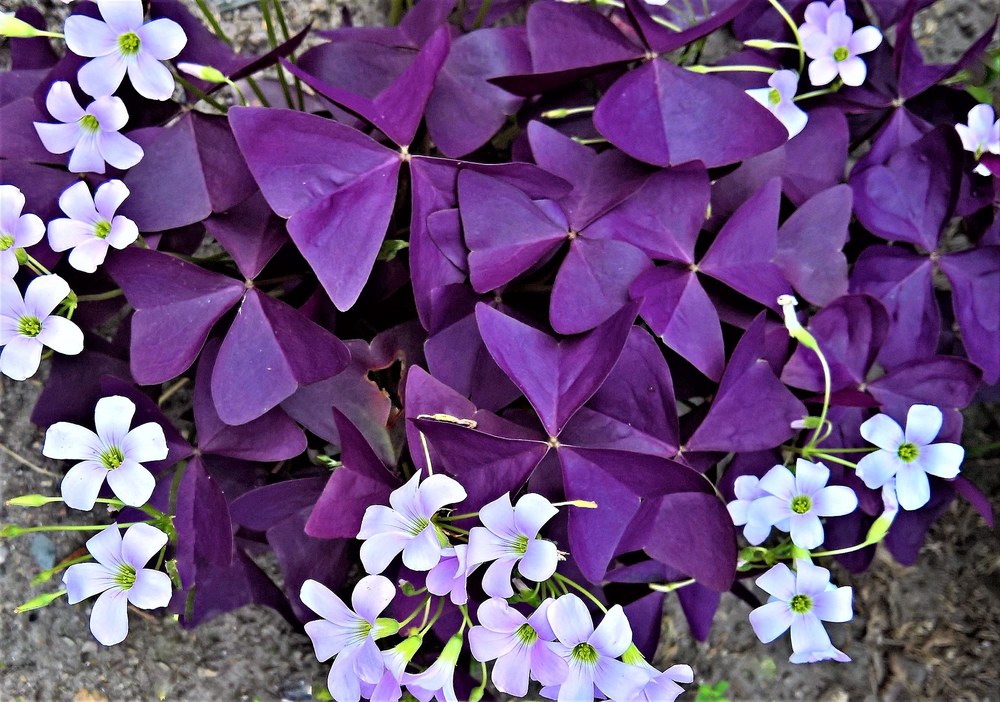Posted: March 1, 2023
The shamrock is a symbol of Ireland with a long history of myths, legends and folklore. Read more about this flowering perennial.

Purple Leaf Shamrock- pixabay
According to tradition, St. Patrick used the shamrock to explain the three persons of the Trinity when he brought Christianity to Ireland. The word shamrock comes from the Irish word "seamrog" meaning "little clover".
Shamrock plants are a species of Oxalis, with the common name Wood Sorrels. Oxalis are classified as herbaceous perennials. Other common names are False Shamrock, Good Luck plant, Purple Shamrock, and the Love plant. Oxalis plants grow from small bulbs, which help the plant survive harsh conditions, like drought and freezing temperatures.
Wood Sorrels feature trifoliate leaves and white flowers in the spring. Unlike clover found in yards, the wood sorrel plant leaves contain a toxic organic oxalic acid. When placing your plant indoors, caution should be used in the presence of children and pets, although it is characterized as a "low severity poison". Oxalic acid emits a sour taste to protect grazing wildlife.
Most Oxalis have leaves with 3 or 4 leaflets, but some have up to 9 divisions. Their patterned leaves come in a variety of colors, such as green, red, or purple. The five-petaled flowers exhibit bright colors of pink, red, white, or yellow on a long stalk. On overcast days or at night the leaflets will fold up, which is known as being nyctinstic. Nyctinasty is the circadian rhythmic nastic movement of some plants in response to the onset of darkness, or a plant "sleeping". Circadian rhythm is the plant's and human's 24 hour internal clock; sleep/wake cycle.
All Oxalis species need cool conditions, especially when in bloom, and a bright sunny window to thrive indoors. Day temperature should be no greater than 75 degrees during the day and 15-25 degrees cooler at night. Soil should be lightly moist, not wet. Over-watering can cause root rot. During the summer, the plant will start to decline. The bulbs will need to go through a rest period. Once the leaves die back, place the plant in a cool dry spot for 2-3 months. However, the purple-leaf varieties only require a month of dormancy. After the rest period, move the container back to the bright window and begin watering and fertilizing. Oxalis are easy to propagate when dormant by separating many of the smaller bulbs into smaller groups. When planting outdoors, Oxalis can be used in borders, hanging baskets and decorative containers.
Common species sold as houseplants include, Wood Sorrel (Oxalis acetosella), Lucky Clover (Oxalis deppei), Cape Oxalis, (Oxalis purpurea), and Purple-Leaf Shamrock (Oxalis triangularis)
The Botany Behind the Shamrock (Penn State Extension)
Find-a-Plant (North Carolina State University Extension)

